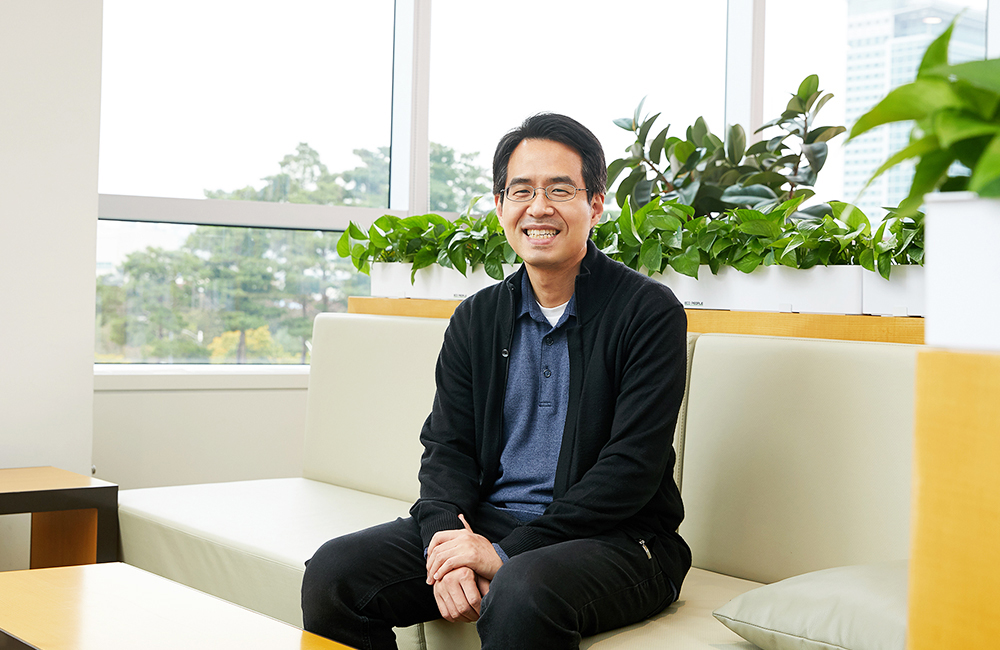Samsung Electronics Develops Industry-leading Blue QLED Technology
Samsung Advanced Institute of Technology (SAIT), Samsung’s R&D hub dedicated to cutting-edge future technologies has secured industry-leading cadmium-free blue Quantum Dot light-emitting diodes (QLEDs) performance.
Since blue is known to be the most difficult color to implement out of the three primary QLED colors (red, blue and green), this achievement – coming in the wake of Samsung’s development of red QLED technology last November – once again proves Samsung’s excellence in the quantum dot technology sphere.
Blue Proves the Most Difficult of the Three Primary QLED Colors
Quantum dots (QDs) are semiconductor particles that measure a few nanometers in diameter (tens of thousands of times narrower than a single human hair). When illuminated, they re-emit light of a certain color depending on their size.
The blue QD, which has the largest band gap1 among the three primary colors, rapidly oxidizes upon exposure to external light, resulting in a short lifespan and low luminous efficiency.2 For this reason, up to now the industry had failed to develop even the technology required for blue quantum dot light-emitting diodes.
Overcoming Another Challenge by Developing Blue QLED Technology
But now, SAIT has successfully developed blue QLED technology, achieving industry-leading results such as 20.2% improved luminous efficiency, 88,900 nits of maximum luminance and 16,000 hours of QLED lifetime (measured at half-brightness for 100-nit luminance). These results were recorded in a study titled “Efficient and stable blue quantum dot light-emitting diode”, which was published by the journal Nature on October 14, 2020.

Eunjoo Jang, Samsung Fellow
“Samsung’s distinctive quantum dot technology has once again overcome the limitations of existing technology in the industry,” noted Dr. Eunjoo Jang, Samsung Fellow and corresponding author for the study. “I hope that this study goes on to help accelerate the commercialization of Quantum Dot light-emitting diodes (QLEDs).”

Quantum dots are made up of a basic structure of a core, a shell, and multiple ligands.3 In order to better stabilize the QD materials and secure durable photoresponse functionality, the researchers applied a structure with quantum dot double emitting layers and shorter ligands on the surface of the blue-light-emitting QDs while also improving current injection rates.

Taehyung Kim, Principal Researcher
Dr. Taehyung Kim, Principal Researcher and the first author of the study, said, “This research is meaningful in that we have not only established Quantum Dot light-emitting diode performance, but have also proven that the technology can deliver top-notch performance at the element level.”

(From left) Kwang-Hee Kim, Taehyung Kim, Eunjoo Jang, Sungwoo Kim, Seon-Myeong Choi from SAIT
1 The difference of energy between the valence band of electrons and the conduction band.
2 The ratio of the emitting luminous flux to the total input flux of source.
3 The core absorbs and re-emits light, while the shell layer surrounding the QD core improves lifespan and photoluminescence efficiency by preventing temperature/humidity-related damage. The branch-shaped ligands are located on the surface of the QD’s shell and help maintain inter-particle distance.
Corporate > Technology
For any issues related to customer service, please go to
Customer Support page for assistance.
For media inquiries, please click Media Contact to move to the form.